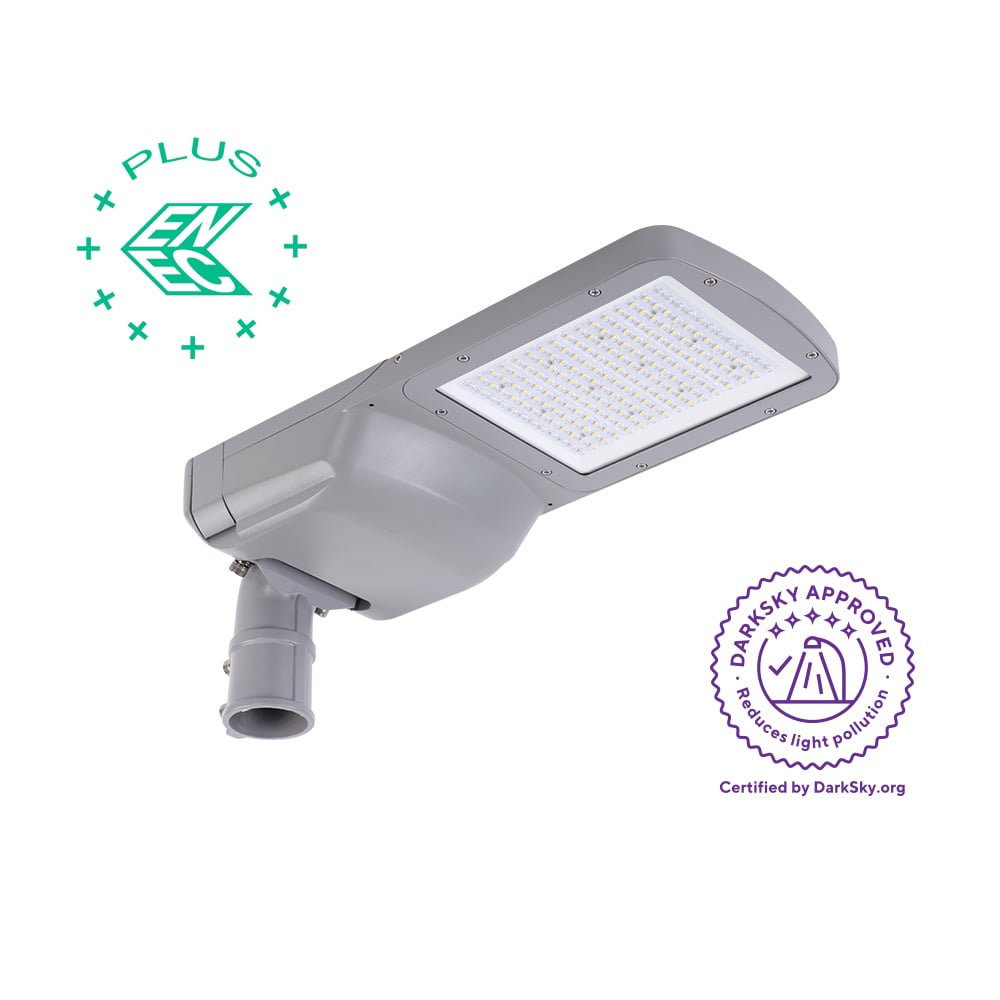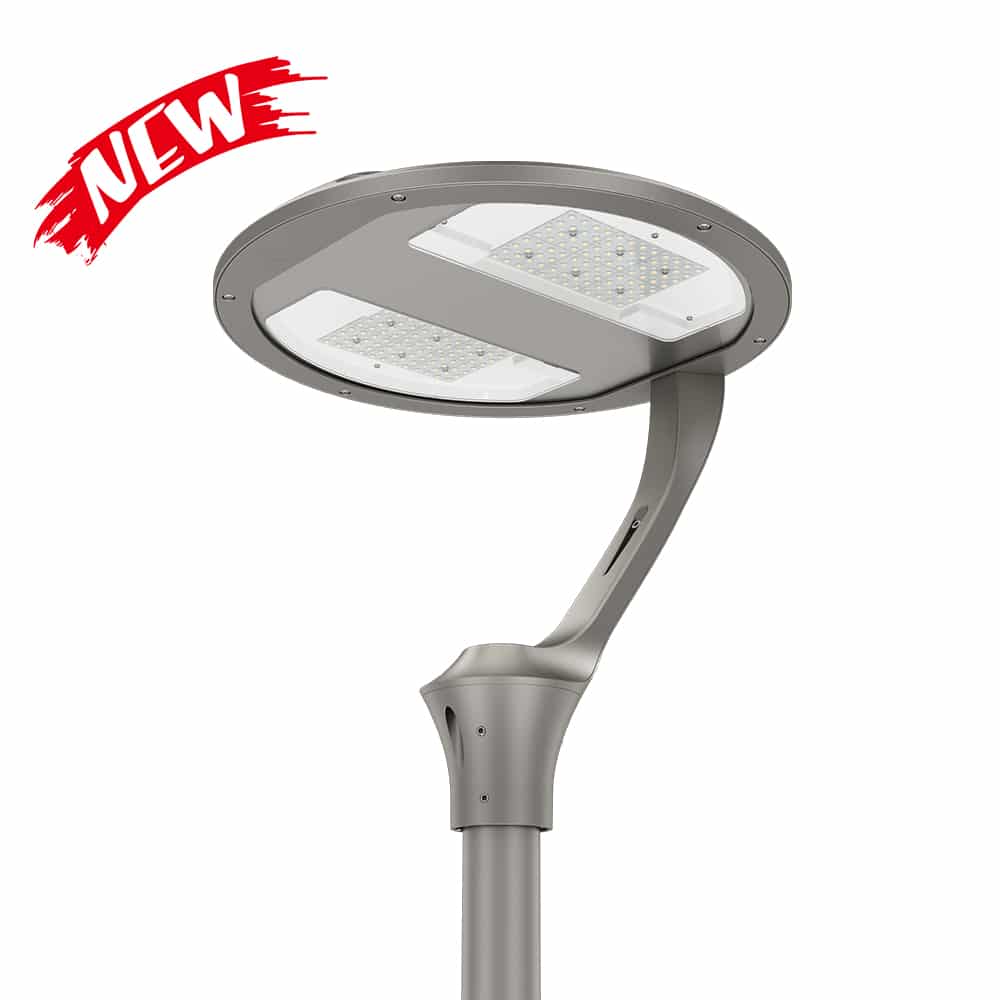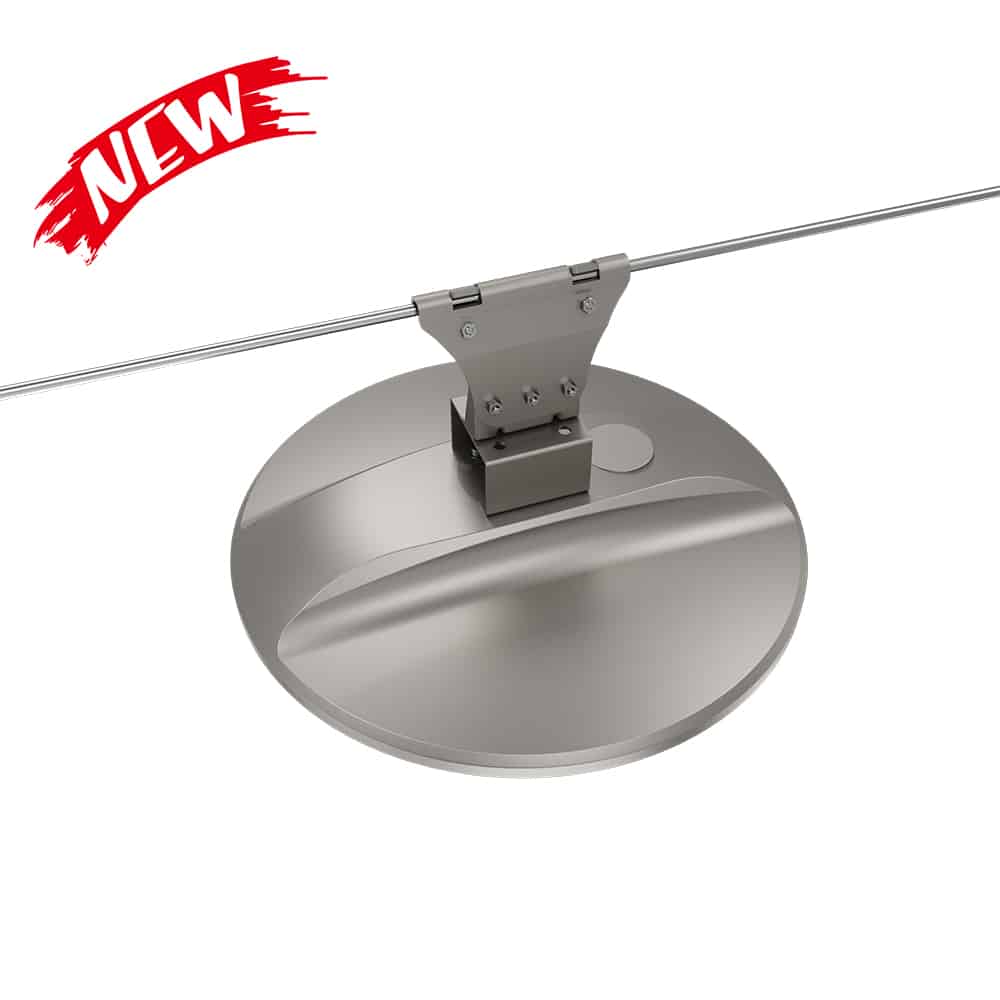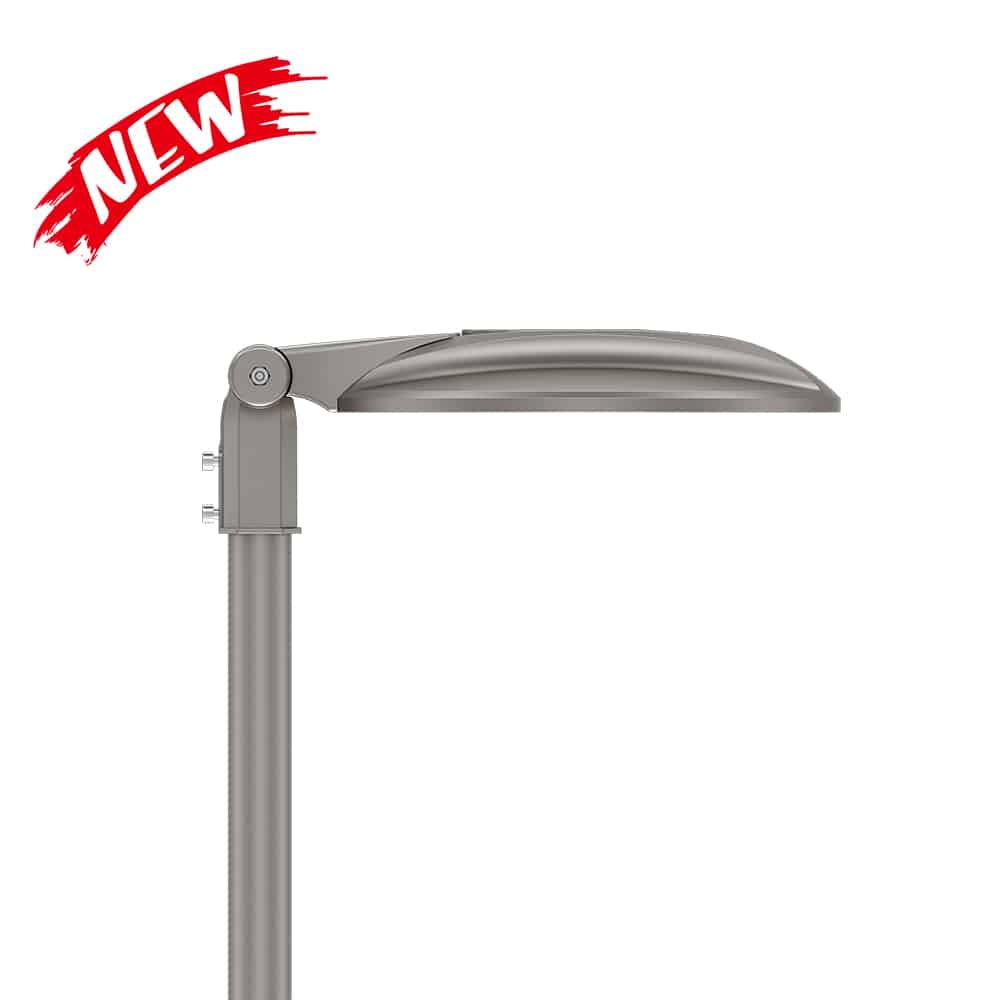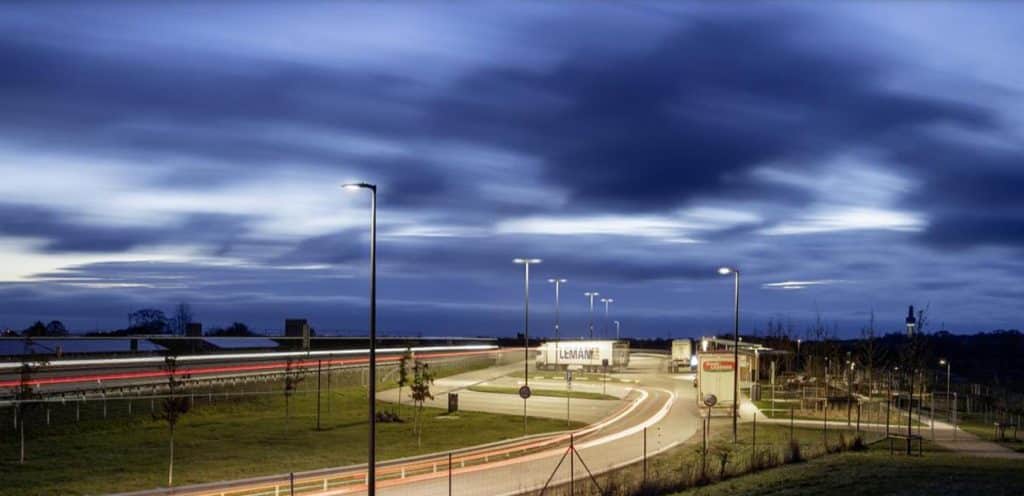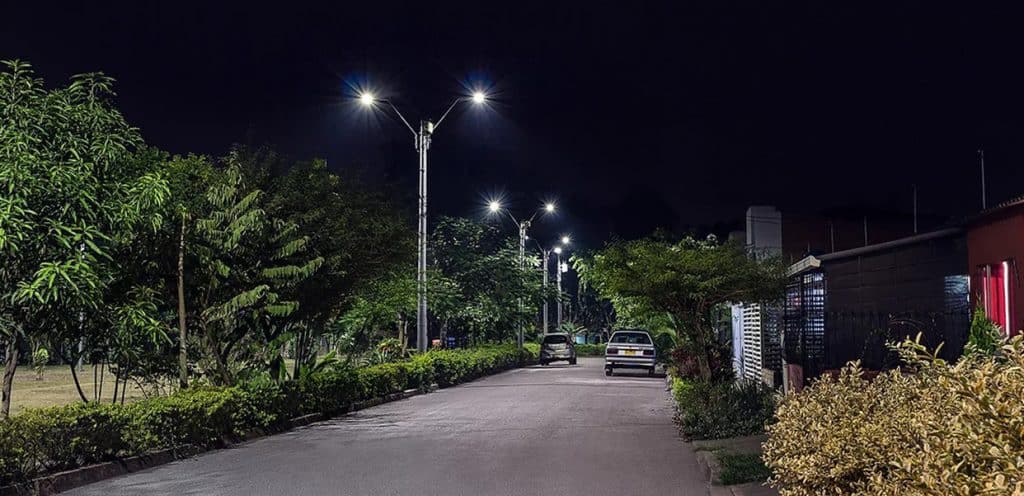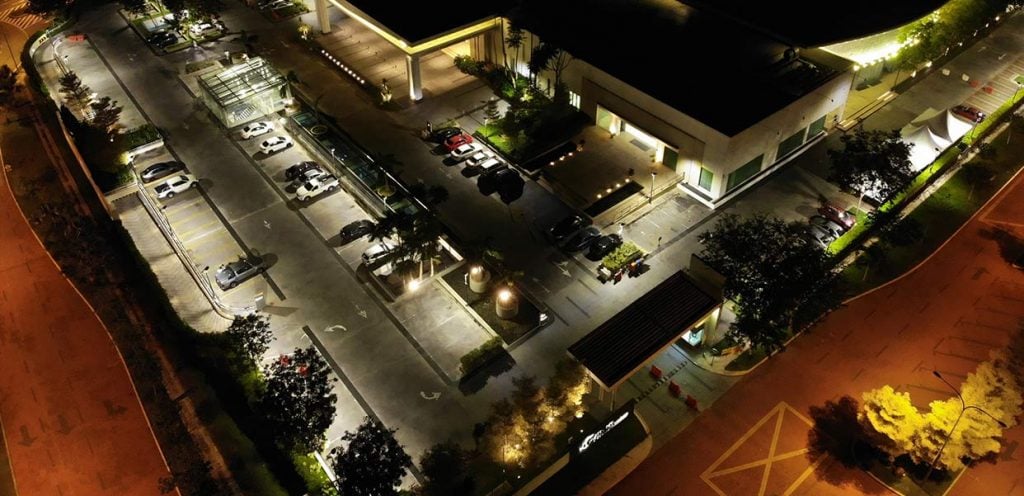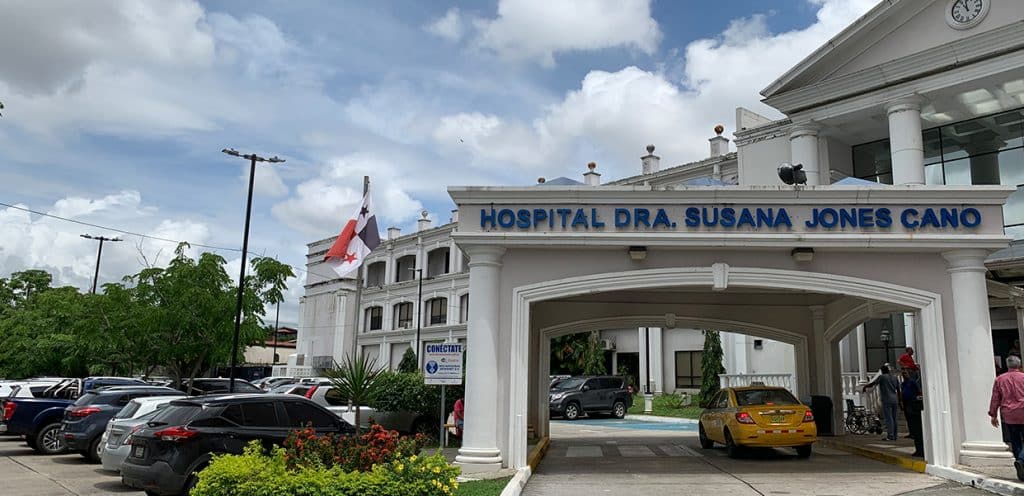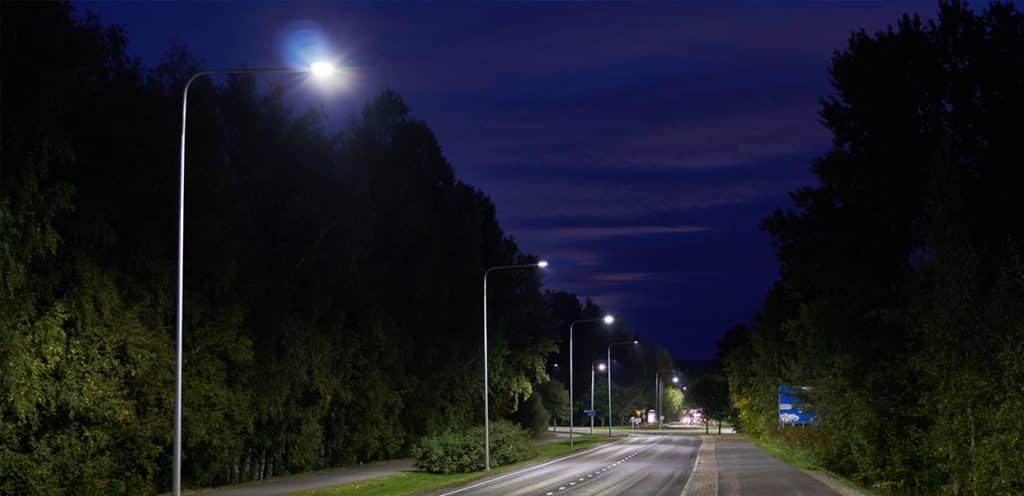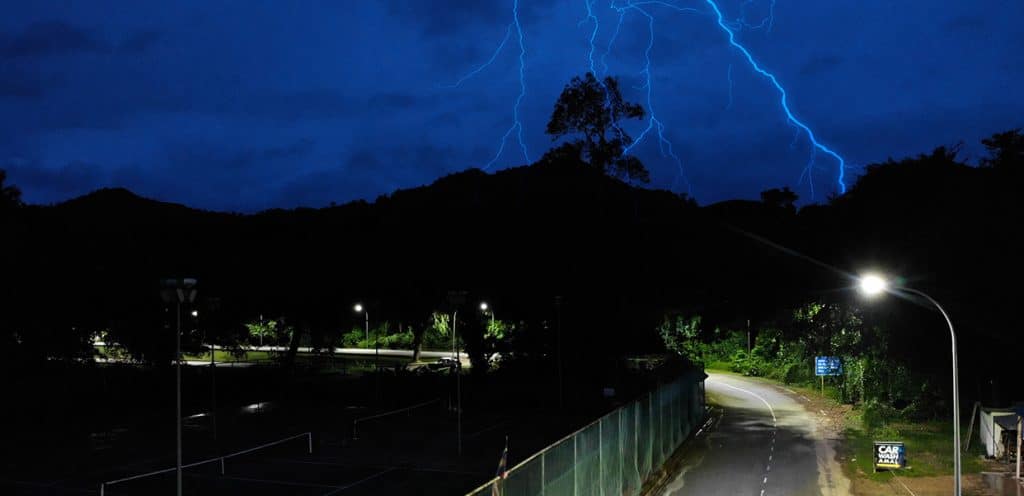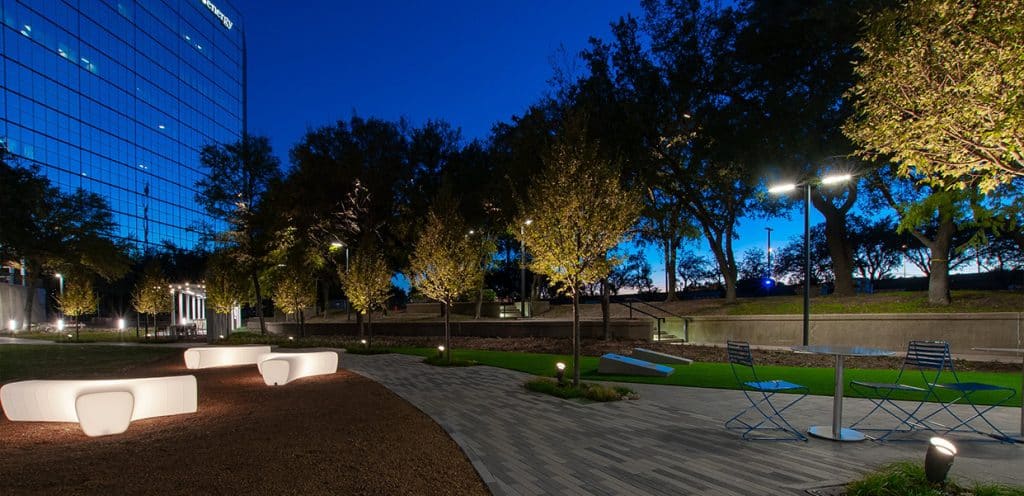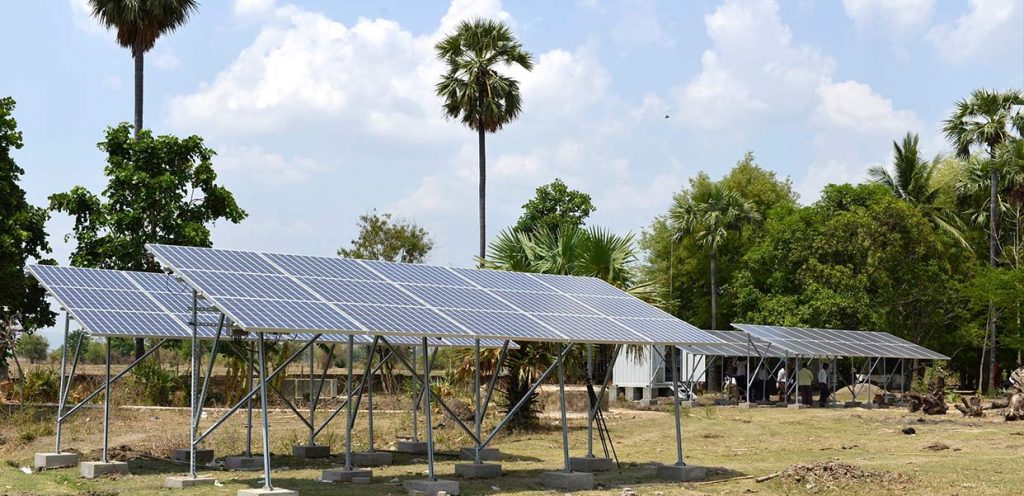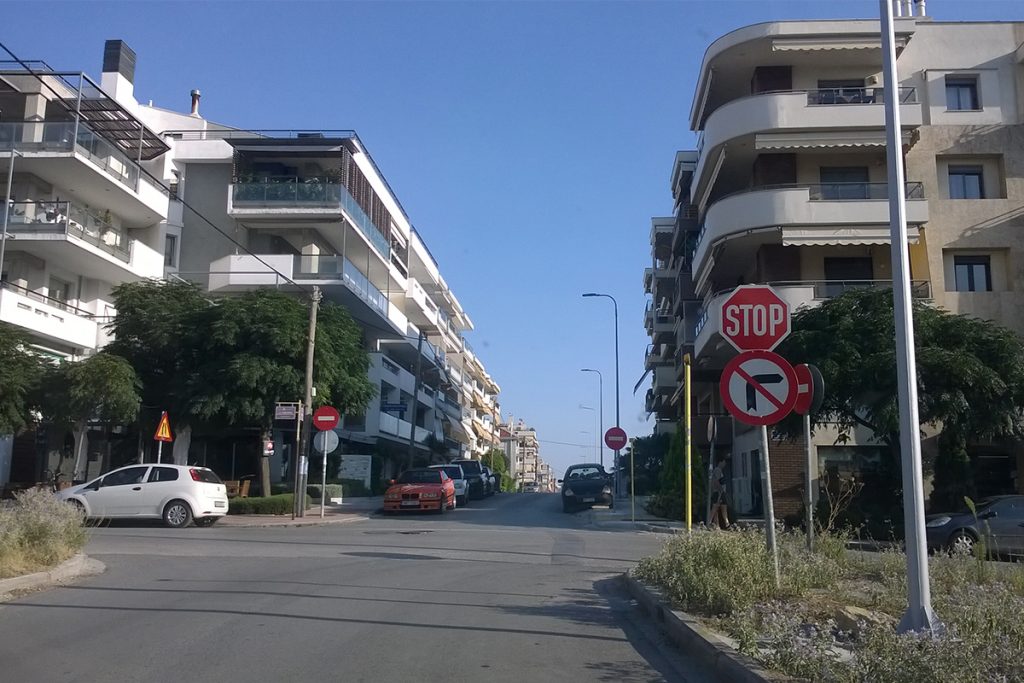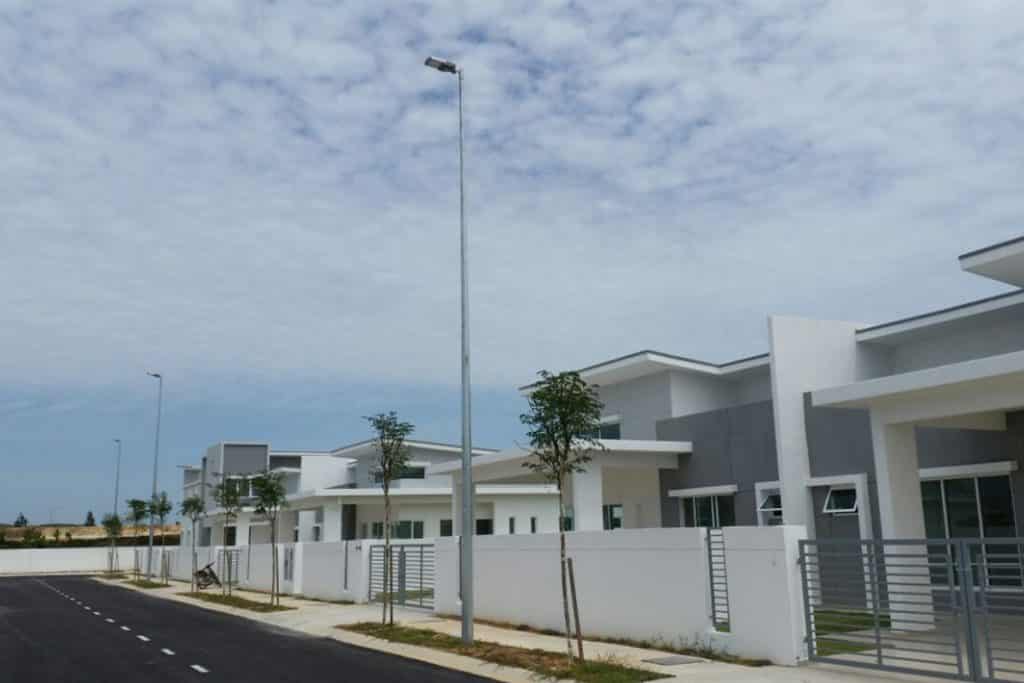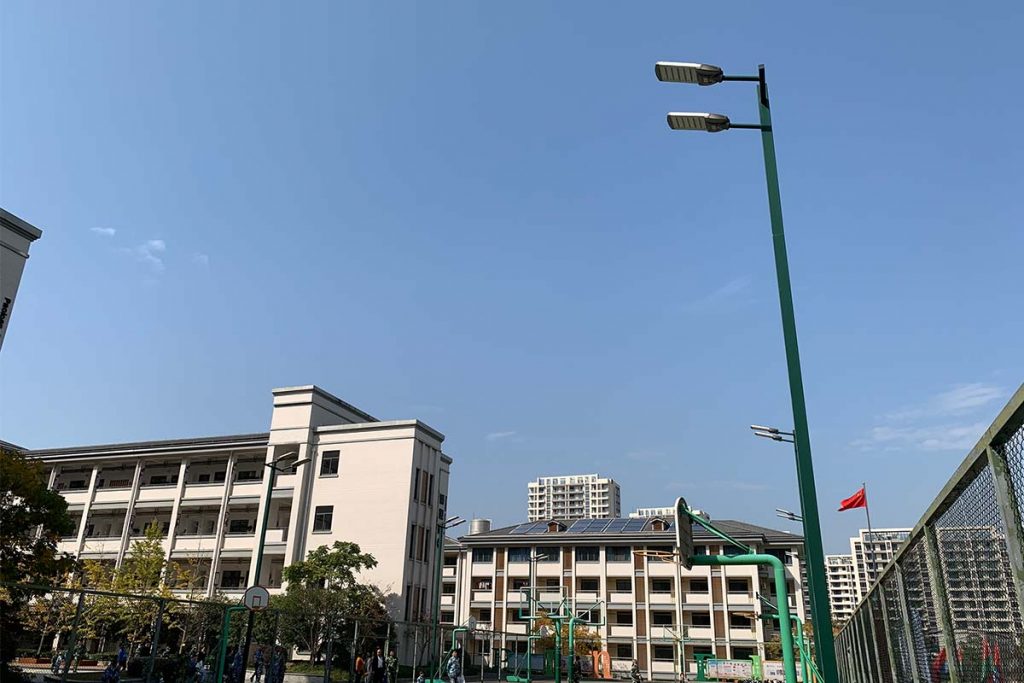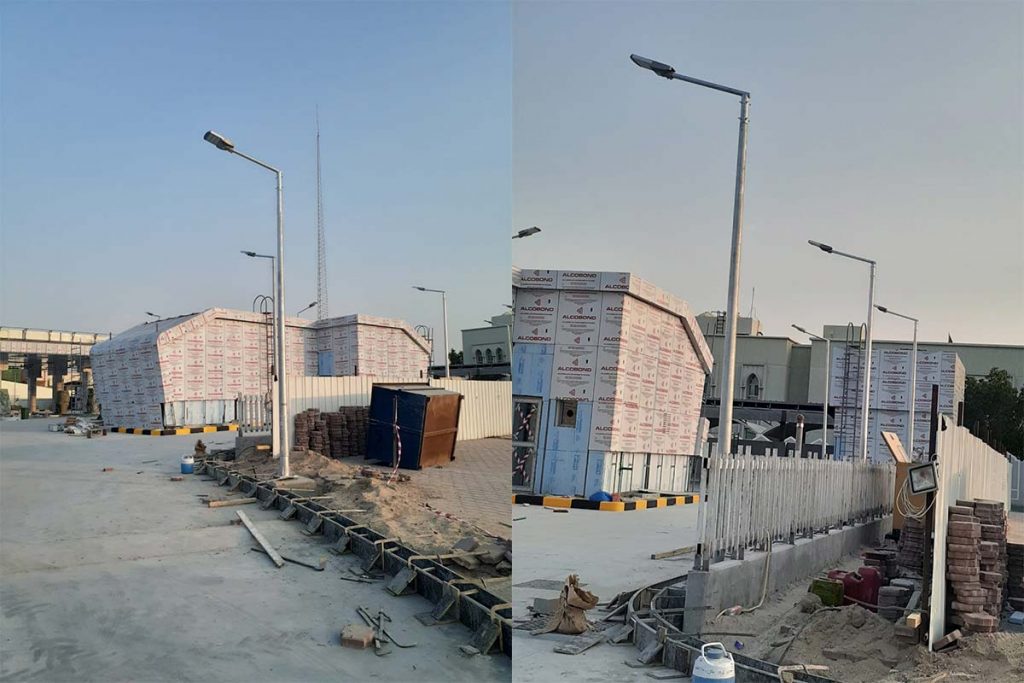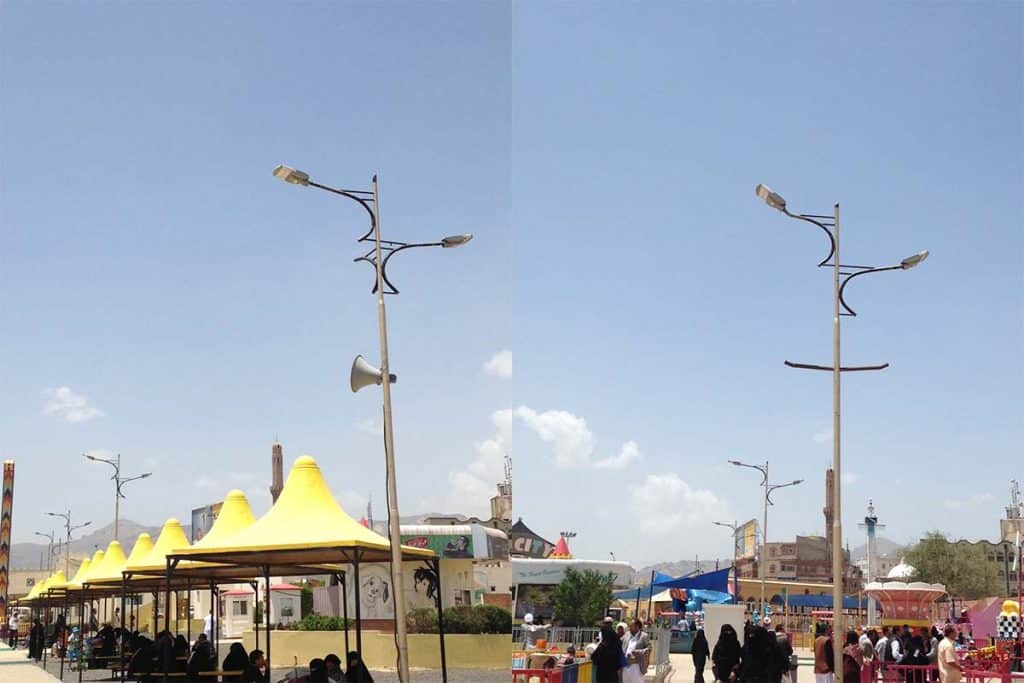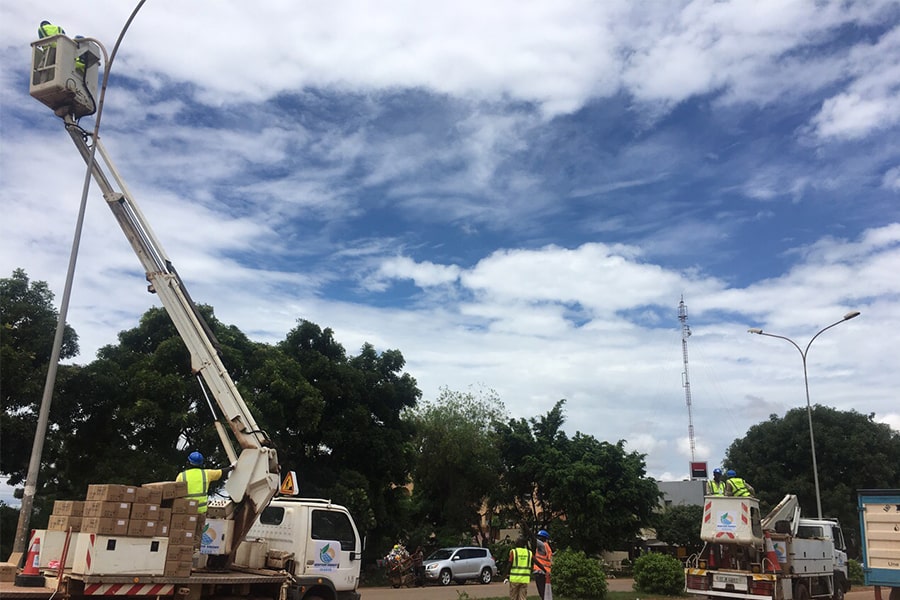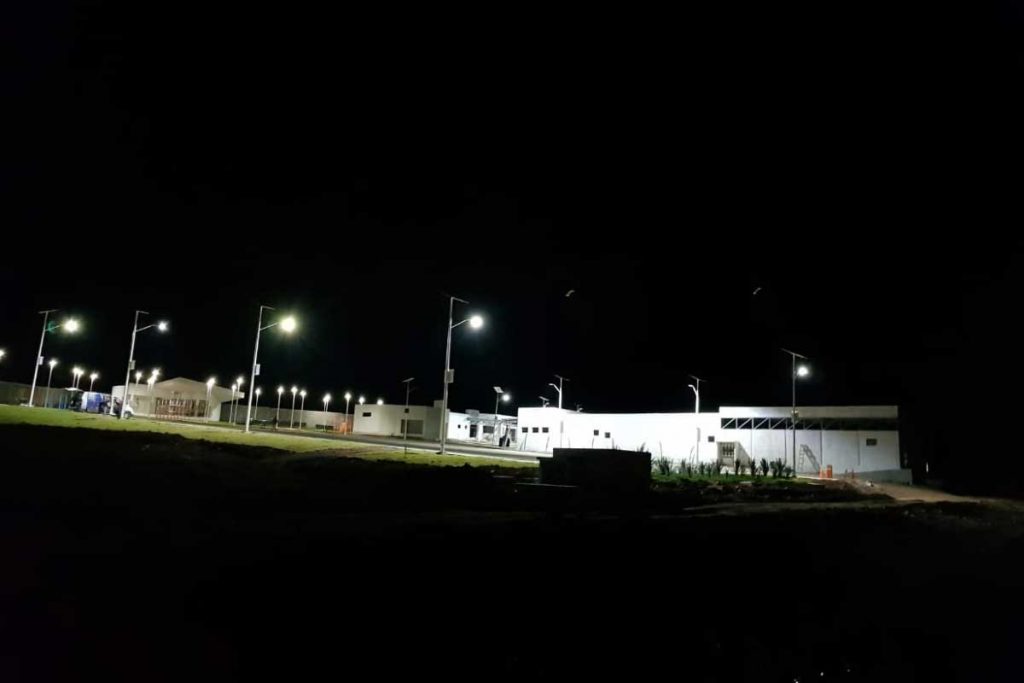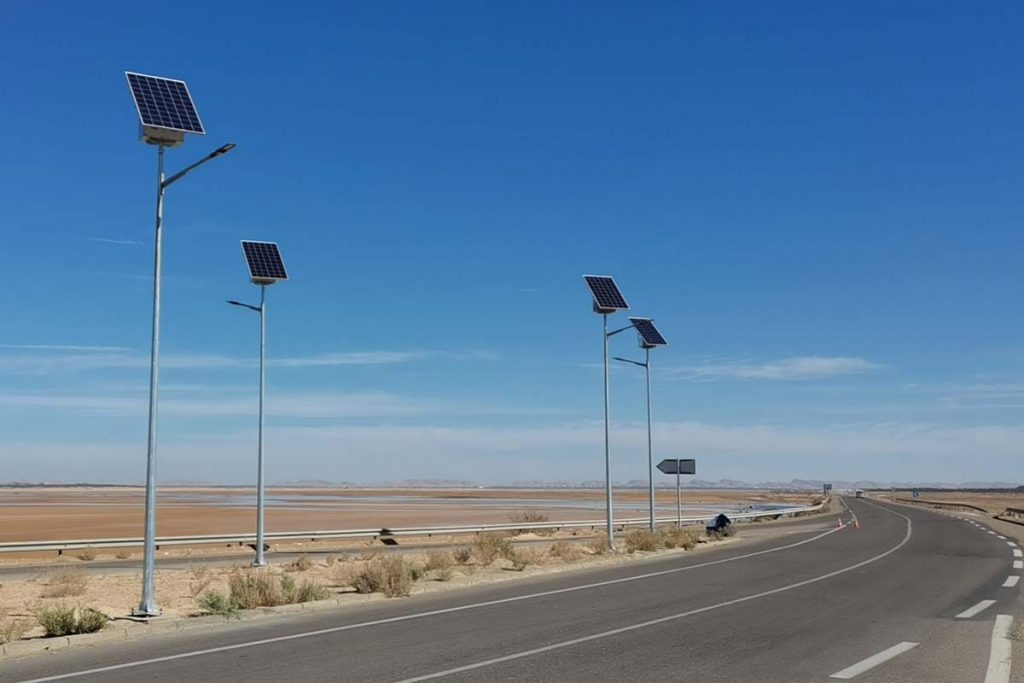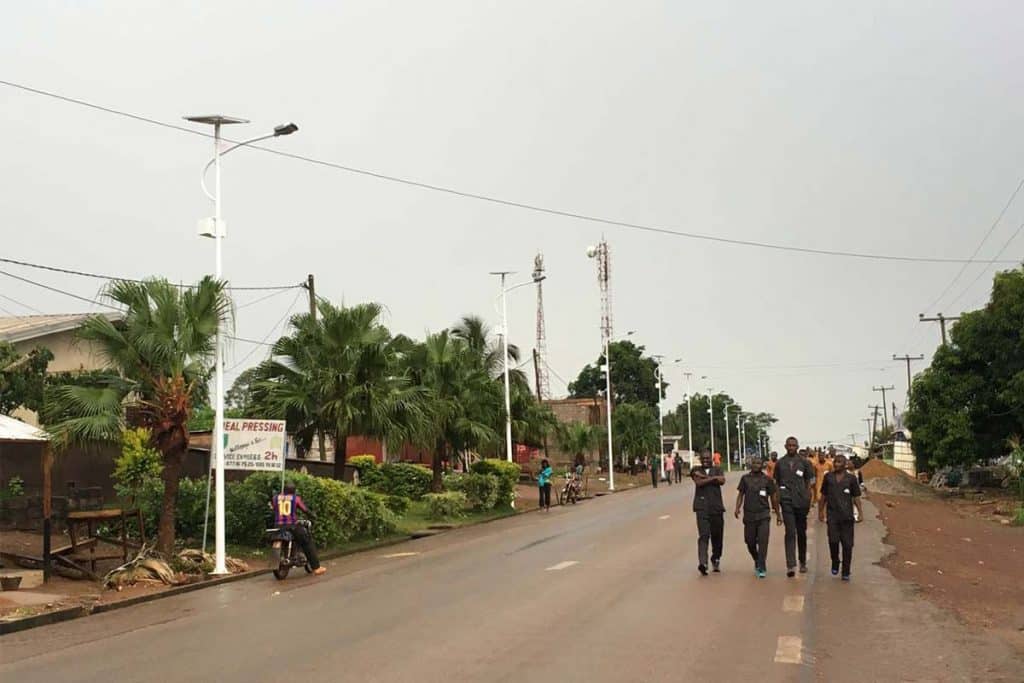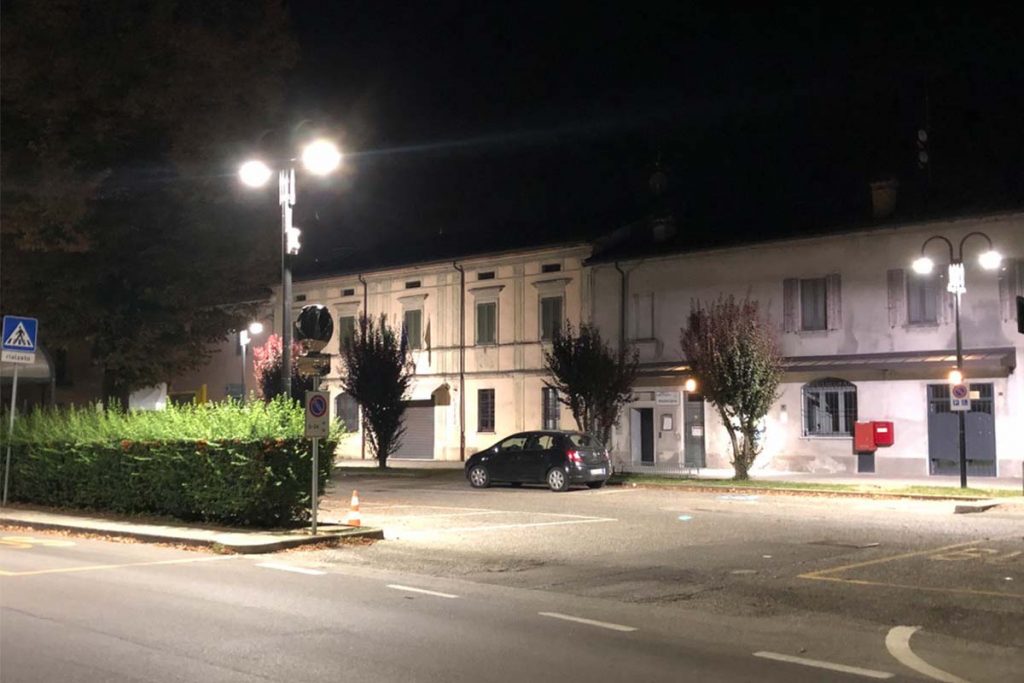Guidelines and award criteria of city street lighting project
Guidelines and award criteria of city street lighting project
Introduction
In recent years, LED lighting solutions have developed rapidly and have significant energy saving potential. With continuously improving efficiency, optimized luminaire design and flexible lighting control, LED luminaires ( Browse street luminaires for main road cases ) can achieve ideal lighting performance at lower cost in different lighting conditions or traffic environments.
Although LEDs are increasingly used in the outdoor lighting market, their advantages and corresponding standards remain underappreciated, preventing them from achieving widespread market penetration. The guidelines presented in this article focus on the design and procurement of street lighting systems and are primarily aimed at procurement professionals and decision makers at the municipal level responsible for commissioning new or refurbished street lighting installations. At the same time, the guidelines may also be helpful to street lighting designers and planners, lighting manufacturers, project contractors, and energy experts and consultants.
The recommendations in this article are largely dependent on the reader’s specific context and purpose. For example, experts who are already familiar with the basics((Luminance, Glare, CCT, CRI, IP, IK, IEC protection, SPD ( surge protection for LED lighting systems ) , Efficiency, Lifetime, Warranty, Price) of LED street lighting can go directly to chapter 3 to view specific procurement criteria recommendations. Experts less familiar with the basics can start with chapter 2. This chapter covers basic information relevant to understanding procurement standards, including chief quality and efficiency aspects of city street lighting and the EN 13201 standard, etc.
Quality criteria
Below are some metrics used to quantify the amount of light provided by a lighting system and perceived by the human eye. They include luminous flux, illuminance, luminous intensity and brightness.
Luminance as per EN13201
Luminous flux (measured in lumens, or lm) is the total amount of radiation emitted by a given light source that is visible to the human eye. Since the human eye has different sensitivity to different wavelengths (eg, green light is more sensitive than red or blue light), in photometry, luminous flux is a measure of the perceived power of different lights. It is different from radiant flux, which is adjusted to reflect the different sensitivities of the human eye to different wavelengths of light.
Illuminance (in lux, or lx, 1 lux = 1 lm/m²) represents the total amount of light that reaches a particular illuminated surface area. The EN13201 standard specifies minimum illuminance standards for different road categories. Under normal circumstances, motor vehicle lanes will have requirements for brightness, and non-motor vehicle lanes (such as sidewalks) will have requirements for brightness. For example, the average illuminance requirements of roads such as footways and cycleways range from 2 to 15 lx. Recommendations for standard illuminance and illuminance requirements are given in EN 13201.
Luminous intensity (in candela or cd, 1 cd = 1 lm/radian square) expresses the spatial distribution of light, that is, the luminous flux within a given solid angle from the source. In the case of street lighting, spatial distribution must ensure adequate lighting for roads ( View street luminaires for main road case ), street furniture and road users, and any upward lighting is often undesirable.
After introducing the luminous intensity, the next step is the brightness. Luminance (measured in cd/m²) represents the brightness of an illuminated surface or object as perceived by the human eye. Brightness is a photometric measure of the luminous intensity per unit area when light moves in a certain direction. It refers to the amount of light within a given solid angle. Generally, the minimum brightness requirement for motor vehicle lanes is between 0.3 ~ 2cd/m². The EN13201 standard specifies the minimum brightness requirements for road categories covering different highways ( Please review case studies of Highway street lights. ) , if you are interested you can check the EN13201 standards.
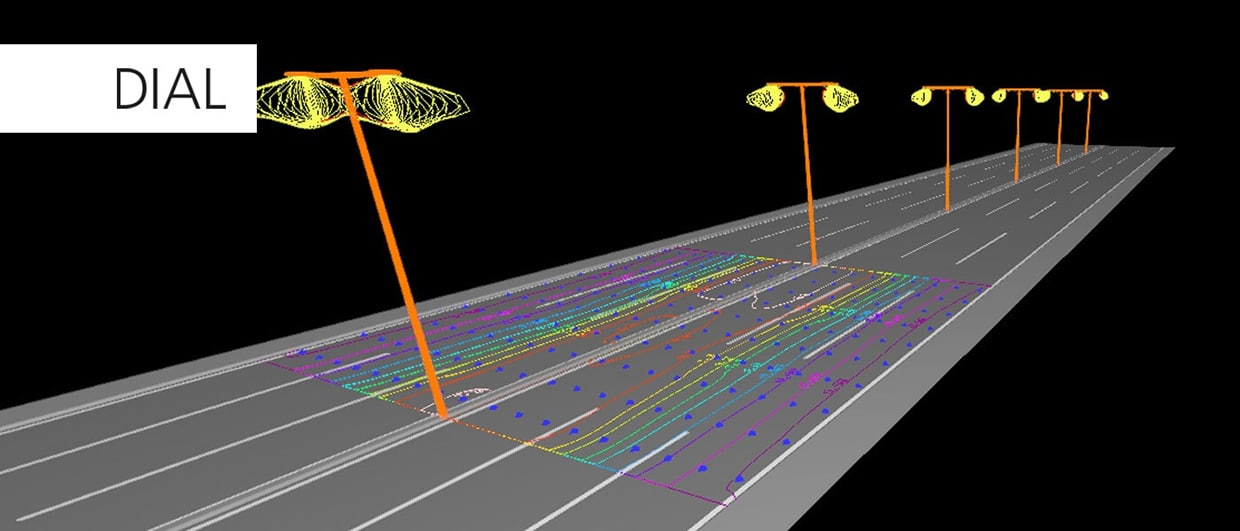
Glare
Glare is an unpleasant visual effect caused by an unreasonable luminosity distribution or high contrast, forcing the eye to adjust quickly. There are two typical glare effects: disable glare, which is a decrease in contrast sensitivity due to the scattering of light within the eye. Discomfort glare, which induces a subjective sense of discomfort.
Different classifications are introduced for discomfort and disable glare, classifying different levels of shielding. Shielding levels for disability glare are G1 to G6 (see table below), and shielding levels for discomfort glare are D1 to D6 (see table below).
The disable glare can be obtained by referring to the table when checking the IES of LED light. The discomfort glare index is I × A-0.5, unit cd/m, where:
For example A luminous sphere has a diameter of 0,5 m and an intensity of 60 cd per 1 000 lm bare lamp
output in any direction. The apparent area is π × 0.5 × 0.5 / 4 m2 = 0.20 m2 and the glare index value is 60 × 0.20-0.5 = 134 per 1 000 lm lamp output. With current lamp output values, the use of 50 W LED street lamps for this particular luminaire results in classes D5 respectively.
LED light sources can provide very high brightness, which can cause glare. For this reason, LED lights are usually equipped with diffusers to reduce this brightness. Street lighting systems should be designed to avoid significant differences in brightness between the light source and the illuminated area. Also, continuously changing lighting levels can cause eyestrain and should be avoided, especially on long roads. In the simulation of city street lighting, the TI value is generally mainly discussed.
| Class | Maximum luminousa intensity in directions below the horizontal in cd/klm of the output flux of the luminaire. | Other requirements | ||
| at 70° and aboveb | at 80° and aboveb | at 90° and aboveb | ||
| G*1 | / | 200 | 50 | None |
| G*2 | / | 150 | 30 | None |
| G*3 | / | 100 | 20 | None |
| G*4 | 500 | 100 | 10 | Luminous intensities above 95° b to be zeroc |
| G*5 | 350 | 100 | 10 | Luminous intensities above 95° b to be zeroc |
| G*6 | 350 | 100 | 0c | Luminous intensities above 90° b to be zeroc |
| a. Luminous intensities are given for any direction forming the specified angle from the downward vertical with the luminaire installed for use. b. Any direction forming the specified angle from the downward vertical, with the luminaire installed for use. c. Luminous intensities up to 1 cd/klm can be regarded as being zero. |
||||
| Classes | D0 | D1 | D2 | D3 | D4 | D5 | D6 |
| Glare index maximum(cd/klm) | not specified | 7000 | 5500 | 4000 | 2000 | 1000 | 500 |
Colour temperature
Light sources typically emit light in a wide range of different wavelengths, and are generally considered to have only one color. We call the color of this light source the correlated color temperature. Correlated Color Temperature (CCT) is the temperature of the Planck radiator corresponding to the light source, which means that the reference color of the Planck radiator heated to a specific temperature (in Kelvin) is closest to the color of the light source. CCT is defined in degrees Kelvin; a warm light is around 2700K, moving to neutral white at around 4000K, and to cool white, at 5000K or more. Different European regions show different preferences for the color of indoor and outdoor lighting. For example, “cool white” (blue) is more popular in southern European countries, while in central and northern European countries people prefer warm white light. Therefore, in Central and Nordic countries, light with a high color temperature may be less acceptable to residents.
Compared to various older lighting technologies, LED lighting offers the opportunity to flexibly adjust or select color temperature for various applications. However, it should be taken into account that the color temperature of the light source has an impact on the energy efficiency of the lighting system, which may have physiological effects on humans and animals. Cool white light with a high color temperature provides a higher level of energy efficiency for the lighting system. On the other hand, the high intensity of blue light in cool white light sources may also cause health and safety issues that must be considered. Research has shown that white light supports the human eye’s perception more effectively than yellow light, and therefore appears brighter. Therefore, in complex road situations involving different types of road users (eg cars, cyclists, pedestrians), white light (eg 4000 K) is usually preferred. In contrast, lower, warmer color temperatures may be more suitable for areas with higher dimensions.

Colour maintenance
In addition to correlated color temperature, so-called chromaticity, the specific coordinates of a color in the spectrum, can be used to specify the color uniformity of a particular type of lamp. Differences in the color of light from a batch of lamps or over a period of time are represented by what is known as a MacAdam ellipse. The color consistency of a particular lamp or luminaire type can be represented by the size of the MacAdam ellipse. Usually there are 3-step, 5-step, and 7-step. 3-step LEDs are more consistent in color than 5- or 7-step LEDs. The current minimum requirement is a 5-step McAdam ellipse, although some projects require 3-step LEDs.
Color deviation over time can be specified and evaluated by color coordinates and MacAdam ellipses. Color maintenance is a particular concern for LED lighting, as aging LED modules can change their color temperature and color coordinates. Issues with color maintenance can be caused by material degradation, contamination, or other types of system degradation used for the LED package or lens. The direct cause may be higher operating temperature, higher operating current, and discoloration of optical materials caused by blue or ultraviolet radiation.
Colour rendering index
CRI is a quantitative measure of the ability of a light source to faithfully reveal the color of various objects compared to natural or standard light sources. Light sources of the same color temperature can vary greatly in how they represent the color of illuminated areas and objects. Therefore, the color temperature and color rendering ability of the light source is not a concept, it does not depend on the color temperature of the light source, but on the spectral wavelength emitted by the light source. A light source that provides the full spectrum of wavelengths can represent all color variations of illuminated objects in a very natural way. Light sources that emit only selected colors only support the representation of those specific colors.
The color rendering ability of a light source is quantified under laboratory conditions with eight specified standard colors. Color rendering is expressed by the color rendering index (CRI, with a maximum index of 100). A lighting system with a color rendering of 80 or higher is suitable for good facial recognition. The color rendering index of LED lamps is usually 80 or higher. For streets with simple usage patterns, the Ra>70 color rendering is usually sufficient. For more complex usage and lighting situations, Ra> 80 is desirable.
Light pollution
Artificial lighting can have harmful effects on humans and animals, including unwanted light transmission outdoors, or light pollution. For humans, the effects include over-lighting of the night sky in and around cities, and sleep disturbance caused by improperly positioned outdoor lighting in residential areas ( View modern street lamp for residential area roads case ). Animals, on the other hand, utilize natural light sources as a navigation tool, so they may be confused or scare away by artificial lighting, which in turn affects animal navigation, physiology, and reproduction. Studies have shown that LED street light sources attract fewer insects than other technologies, with “warm white” LEDs (3000 K color temperature) attracting significantly fewer insects than “cool white” LEDs (6000 K color temperature).
A luminaire that illuminates the illuminated area. Directional light sources combined with LEDs are particularly suitable for achieving an optimized light distribution. Light emission above the light source is generally not desired.
Light emitted upwards by a luminaire is quantified by the Upward Light Output Ratio (abbreviated as ULOR or RULO):
Lamp Up Lumen Output / Total Lamp Lumen Output
Now ULOR has been replaced by BUG. BUG rating is based on the proportion of lumens of LED lamps in three main solid angles, namely Forward light, back light and up light. These are lights in front of the LED light, behind the LED light, and above the LED light. These solid angles are parts of the entire 4π solid angle around the luminaire, these primary solid angles are further divided into 10 secondary solid angles. By calculating With the ratio of lumens contained in these secondary solid angles, we can get BUG ratings. The image below visually shows the various lights and their characteristics.
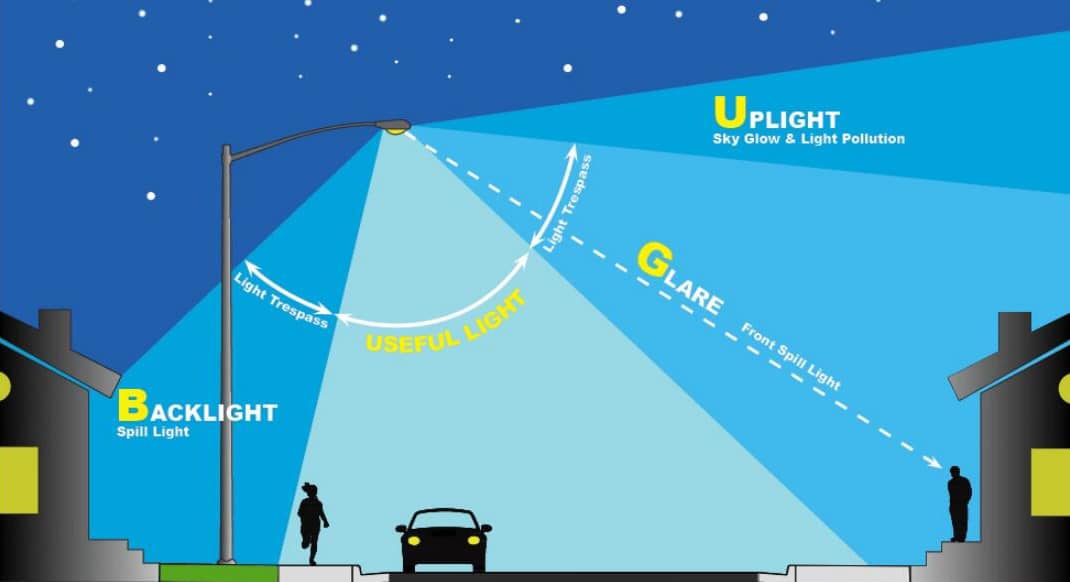
Safety criteria
Street lighting fixtures must be protected against foreign substances (solid and liquid), mechanical shock and voltage fluctuations to ensure their continued normal operation. For this purpose, requirements for ingress protection, surge protection and voltage protection are usually specified.
Ingress protection
The Input Protection (IP) rating is the environmental protection provided by the enclosure according to the directive EN60529 by the European Committee for Standardization of Electronics. The equivalent European standard is IEC 60529. At the same time, it is also mentioned in the general standard of LED lamps and lanterns of EN/IEC60598-1. IP ratings usually have two digits:
First number. Solid particle protection, protects the luminaire from solid objects or materials.
Second number. Liquid protection, protects lamps from the effects of liquids (water, steam), etc.
IP rating is very important for LED lighting fixtures. For LED street lamps, because they are used outdoors include roads, parking lot, square, etc, general customers will require IP66 test reports to ensure that the lamps can have sufficient resistance to dust, particles and bad weather.
Impact factor
The IK rating or “impact protection” (K comes from “kinetic energy” to distinguish it from IP rating) is defined in international standards and represents the level of resistance an electrical enclosure provides to mechanical shock. The IK code for mechanical impact resistance of luminaires is defined by the IEC 62262 standard,
Similar standards are also mentioned in EN/IEC60068-2-75 and EN/IEC 60598. IK rated LED street light range from IK00 to IK10 and are protected against 0 to 20 joules impact. Because outdoor luminaires can be hit by loose branches or other debris in strong winds, or even directly damaged, we recommend that luminaires be at least IK08.
Electrical protection (IEC)
Electrical protection ensures that components have adequate insulation in the event of a failure. IEC (International Electrotechnical Commission) is an international organization that formulates safety standards for the electrical field. It has formulated relevant standards. We are more familiar with Class I and Class II, which refer to the internal structure and electrical insulation of lamps or power supplies. IEC developed these standards to protect users from electric shock. The following are the requirements for Class I and Class II standards:
The protection against electric shock of CLASS I products not only relies on basic insulation, but also includes grounding treatment.
Class II comes from the IEC standard or equivalent standard, mainly refers to the product’s anti-electric shock insulation structure or insulation type refers to the product’s anti-electric shock protection not only relying on basic insulation, but also includes additional safety measures (double insulation) to prevent the occurrence of contact faulty live parts.
Voltage protection
Transient overvoltages (voltages higher than standard design voltages, lasting from microseconds to milliseconds) can cause damage to LED power supplies, LED modules, and controls. Their resistance to this fluctuation is measured by the overvoltage protection rating.
Although EN 61547 specifies the minimum standard for overvoltage protection of LED lighting, it only specifies 0.5 kV (neutral to ground), which is obviously not enough for more severe situations such as lightning strikes. For this reason, EN61643 has made a corresponding standard for surge protection devices ( Surge Protection Devices (SPD) for LED lighting ), so many street light projects refer to this standard to require overvoltage protection to reach 10KV or more.
Others
Resistance to corrosion
Because LED outdoor lamps are used for outdoor application, the project party will require them to be able to adapt to harsh weather conditions. The corrosion-resistant LED street light means it has better applicability in harsh atmospheric environments such as seaside and docks. So how can we make LED street lights have stronger corrosion resistance? First of all, we need to understand the principle of corrosion. Corrosion is an electrochemical process in which metals and alloys are transformed into major oxides, hydroxides and water salts. Therefore, when lamps (usually aluminum alloys), salt and water are together, an electrochemical reaction occurs. One of the easiest and cheapest ways to prevent corrosion, is to use barrier coatings (both electrophoresis and spray) to avoid exposure of metal parts to salt spray. LED lamps treated by relevant processes generally have strong anti-corrosion ability, and can pass the salt spray test in ISO9007/ASTM B117 and other relevant standards.
Efficiency criteria
LEDs achieve very high levels of energy efficiency (lumens per watt of power) compared to most other technologies. At present, LED lights can save 40% to 60% energy than traditional lighting technology. If used with intelligent control system, the energy saving can reach more than 75%. Generally speaking, the higher the efficiency of the lamp, the lower the wattage required by the lamp to illuminate the road, and the more energy-efficient it is. However, the lighting efficiency of a luminaire is affected by the spatial light distribution (luminous intensity), road conditions and the geometric arrangement of street light. In some cases, high-efficiency lamps probably will require more wattage than low-efficiency lamps. To evaluate energy efficiency at the road system level, the Power Density Index (PDI) was developed as a suitable indicator. Correspondingly, the Annual Energy Consumption Indicator (AECI) can better represent the total energy efficiency and energy consumption in a year. These are also the points that the project party (tenderer) and the manufacturer need to pay attention to.
Lifetime
A major advantage of LED lights is their long lifespan. The use of LED lamps in the past few decades also proves that LEDs are indeed better than traditional lamps in this regard. The factors that affect the life of LED lamps are complex, including electrical and thermal operating data, ambient temperature and other parameters. Generally speaking, we will calculate the service life based on the lumen maintenance time of the LED and the lumen maintenance time when LEDs are applied to the LED lamps. The reports used to estimate the life include LM-80, ISTMT, and TM21, and the life is usually calculated with the L70 result. In addition, the LxxByy report of the LEDs and the MTBF report of the power supply are also used as the basis for the service life of the lamp. The life of LED lamps is generally more than 50000hrs.
Control system
Smart Control is dynamic street light management to achieve our maximum real-time control of street lights. On the one hand, it can control the lamps in groups or individually to realize the switching and dimming of lamps. On the other hand, the central control server can also collect the status information of the lamps (for example, parameters such as faults, energy consumption, temperature, voltage and current). At the same time, the programming of the luminaires can be changed as needed for better and more efficient project management. Usually none of these require changes to the physical hardware, just changes to the fixture’s built-in program or real-time control.

Award criteria of city street lighting project
Mandatory requirements
Luminance and glare
The EN13201 standard has clear regulations on the lighting requirements of different roads. For motor vehicle lanes, the M1 to M6 standards are commonly used. It determines which standard (brightness) should be adopted for different road conditions (speed, traffic volume, traffic composition, separation of carriageways, junction density, parked vehicles, ambient luminance, etc). For sidewalks and non-motorized vehicle lanes, the commonly used standards are P1 to P6, which mainly stipulate the illumination requirements of the ground according to the design speed, use intensity, traffic composition, parked vehicles, ambient luminance, and facial recognition. ZGSM believes that road projects should first meet the requirements of planners and road users for lighting levels. The bidder shall provide corresponding lighting simulation and IES of lamps to prove that the lamps provided are in line with the road conditions in the project. However, many projects currently only stipulate the wattage and light efficiency of lamps, which we think is not comprehensive.
EN13201 made a clear explanation of disability glare and discomport glare, corresponding to two levels including G class and D class. At the same time, EN13201 specifies the TI value in lighting simulation. The TI value in ZGSM lighting simulation must conform to the corresponding standard. G class and D class can be required conditionally, but only as a bonus item. Because of different lamp wattage, light distribution curve, installation angle and lamp structure, its G class and D class will be different.
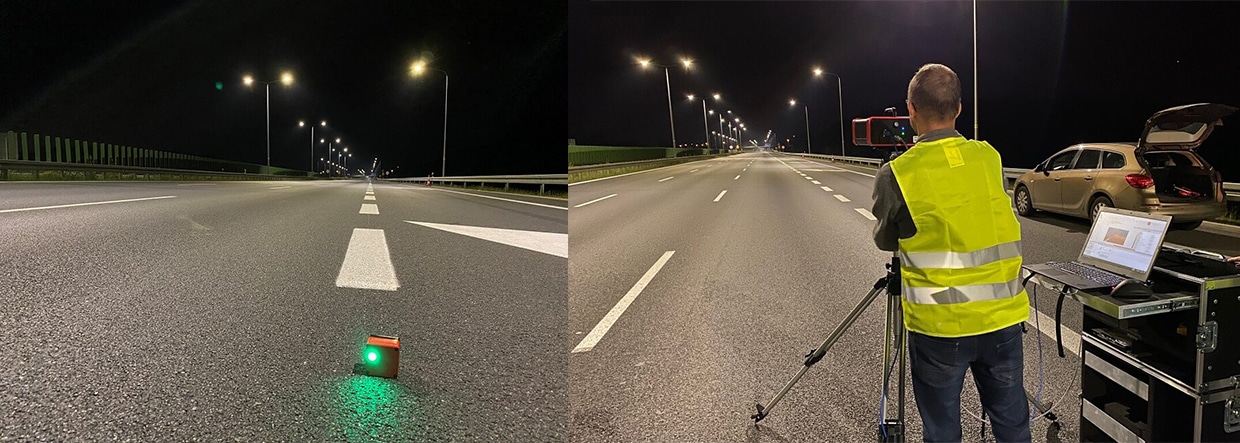
CCT and CRI
Street lighting projects generally have requirements for CCT and CRI. ZGSM believes that these two points are not difficult for most suppliers, and we only need to meet the requirements of the project. Two points to note include:
1. For CCT, we want to focus on the CCT preference of each region/country. As mentioned in the previous chapter, “cool white light” is more popular in some countries in southern Europe, South America and Africa, while in central and northern European countries people prefer warm white light. It is worth noting that more and more projects are now calling for warm white light (below 3000K), as the corresponding research shows that it has less physiological impact on humans and plants.
2. For CRI, for street lighting simulation, ZGSM believes that CRI70 is sufficient, but if the road conditions are really complicated, CRI80 can be increased so that road users can better judge the road conditions, including obstacles, pedestrian traffic ( Standard and requirements refers to pedestrian lighting ), and face recognition for better to respond.
IP and IK
The quality and lumen output of a light fixture is affected by dirt and water that seeps into the light fixture. IP and IK luminaires provide adequate ingress and impact protection for the luminaire. ZGSM believes that city street lighting should meet the most basic protection requirements of IP65 and IK08 to ensure that the lamps can adapt to common road conditions and typical weather conditions. If the weather is particularly bad (such as wind and sand), the IP rating can be increased to IP66 or higher. For outdoor stadium lighting, the IK rating may require IK09 or IK10, as the luminaire is protected against impacts from fast-moving balls.
IEC protection
Electrical protection ensures that components have adequate insulation in the event of a failure to avoid an unacceptable risk of personal injury,
Electricity is inherently dangerous, and electrical equipment is inherently risky. Some projects therefore require two layers of insulation to provide protection to prevent users from coming into contact with faulty live parts. Class II protection is quite common, so ZGSM recommends the use of Class II standard lamps and lanterns under certain conditions.
SPD
Lightning protection shall ensure that transient voltages do not cause damage to facilities, equipment or terminal equipment. Therefore, the lightning arrester mainly completes two tasks: limiting the magnitude of the surge voltage so that the dielectric strength of the device is not exceeded. Limits discharge surge currents associated with surge voltages. Usually the installation should have a surge of 10kv overvoltage protection, which can protect most of the overvoltages of the lamps. If there is a lot of lightning in the area where the lamps are located, ZGSM believes that it can consider upgrading to 20KV surge protection device to ensure that the lamps can better resist the damage of the lamps due to surges.
Resistance to corrosion
Since lamps generally have a surface treatment process and are exposed to harsh weather (including acid rain and a certain degree of salt spray environment), we do not think that the surface of lamps needs special treatment for general projects. When your project is by the sea (indoor lamps such as food factories), ZGSM believes that special treatment is required for the surface of lamps, including electrophoretic phosphating and electrostatic spraying of special coatings. This can ensure that the lamp has a complete structure in bad weather, protect the normal operation of the electronic components inside the lamp, and then enable the lamp to serve street lighting projects with better performance.
Award points
Efficiency-wattage
Compared with traditional LED lights, LED street lights and LED post top lights can save more than 40% of electricity consumption. In order to protect the deteriorating ecological environment of our earth, LED is a good choice. The essential reason is that the luminous efficiency of LED is higher than that of traditional lamps, but how to make our LED street lamps more energy-efficient? First of all, we need to look at the luminous efficiency of lamps. Generally speaking, lamps with high luminous efficiency will score higher in bidding projects. ZGSM believes that it is right to focus on light efficiency, but also pay attention to the wattage of lamps. The reason is that although some lamps have high light efficiency, their unreasonable light distribution (lens) may not necessarily achieve a reasonable lighting effect. For example, the two street lighting simulations use 20W lamps. The light effect of the lamps in the simulation on the right is 140lm/w. Although the light effect in the left image is 130lm/w, it can be seen that the lighting effect is obviously better. . In this case, in order to achieve the effect of the picture on the left, the lamps in the picture on the right have to increase the wattage of the lamps, so that their competitiveness is weaker.

Lifetime
The life of LED lamps is designed to be as little as 50,000 hours, and as many as 100,000 hours or even more (calculated by L70). It usually has a longer life (about 3-6 times) than most high pressure sodium lamps, metal halide lamps or high intensity discharge (traditional street lamps) light sources. Like all light sources, LED light sources become less and less efficient at converting electrical energy into light energy over time, but how to slow this process down is a matter of knowledge. ZGSM believes that it mainly includes three points: 1. The heat dissipation of the lamps 2. The driving current of the LEDs 3. The quality of the LEDs. These three have a greater impact on the life of the LED. In addition, the quality of the LED power supply (calculated by MTBF) is also very important. Long lifetime means that the luminaire can serve your project for a longer time, so it is recommended to use L70 and MTBF as Award points.
Warranty
Warranty means that the Seller will elect in its sole discretion, to refund you the purchase price of LED light, repair or replace LED light when seller determines the LED light is defective. For municipal street lighting projects, the project cycle is longer. If the project side provides warranty, it means to provide guarantee for the owner. At present, most projects provide 5-10 years of product quality assurance to ensure that the lamps can serve the project for such a long time and ensure the rights and interests of the owners and users. ZGSM believes that a product of the same price, if one party has a long warranty period, is the manufacturer’s confidence in its product quality, and its score is naturally high.
Price
The price includes installation costs, power consumption and maintenance costs of the lamps. ZGSM believes that the price is definitely not the lower the better. “You get what you pay for” will never change, so we should try our best to choose street lamps with high cost performance. For high cost performance, we mainly need to consider the luminous efficacy, lifespan and warranty mentioned before. Of course, the difficulty of maintenance and the price of the lamp itself must also be considered. It is necessary to comprehensively consider the selection of street lamps suitable for your project. If you are interested in the price of LED street light, you can contact us or refer to our article “How much do the street lights cost”.
Mandatory vs Award
As follows, we have summarized the different points that should be paid attention to in the street lighting project. Those that do not meet the requirements cannot be shortlisted for the project, and those that can be used as bonus points to select the final finalists. For IP, IK, Efficiency, Lifetime, and Warranty, we assigned different scores to different grades according to projects in other countries. In addition to these, of course, Toolless Open, Glass cover, Reach of materials and Anti-corrision, can also be used as award points. Due to space limitation, we will not discuss it here. In addition, price is generally used as a separate indicator in the tenderassessment, and the score is about 1/3 to 1/2 of the total score.
Mandatory or award points
| Factor | Mandatory points | Award points |
| Luminance | √ | |
| Glare | √ | |
| CCT | √ | |
| CRI | √ | |
| IP | √ | √ |
| IK | √ | √ |
| IEC protection | √ | |
| SPD | √ | |
| Efficiency | √ | √ |
| Lifetime | √ | √ |
| Warranty | √ | √ |
| Price | √ |
Award pionts and their weighting
| Technical specification | Disqualified | 0 point | 5 points | 10 points |
| IP rating | IP<65 | IP=65 | IP=66 | IP>66 |
| IK rating | IK<08 | IK=08 | IK=09 | IK>09 |
| Efficiency | <130lm/W | ≥130lm/w | ≥140lm/w | ≥150lm/w |
| Lifetime(L70) | <50000hrs | >50000hrs | 50000hrs | >10000hrs |
| Warranty | 3 years | 5 years | 7 years | 10 years |
| Specs regarding maintenance | Tool free open, Reach of materials, Ability of anti-corrosion | |||
*The specs are not limited to the above, such as the chromaticity maintenance, IEC protection and CRI described in Chapter 2, as well as the power parameters PF and THD not mentioned in this article, etc. can also be used as bonus items. In addition, the score ratio of each evaluation specs can be adjusted according to the project situation.
Summary
Through this article, we hope that everyone has a certain understanding of Luminance, Glare, CCT, CRI, IP, IK, IEC protection, SPD, Efficiency, Lifetime, Warranty, Price of street lights, including the meaning and importance of these factors, and their choices in street light projects. Of course, the parameters of LED lamps are far more than these. LED light source, LED power supply, luminaire construction and certification are all very important factors. I just want to write this article to tell everyone (project parties, buyers and suppliers) that we have a lot of concerns, and these are the ones we need to focus on. Finally, we also believe that the LED market still has great potential. We hope this article can attract the attention of all relevant personnel and provide a direction for the formulation of relevant standards and relevant policies for LED lighting systems. If you have different opinions or you are interested in different street lights, you are also welcome to write to ZGSM, we can communicate with each other and make progress together. Thanks.
Rated Products
Related Blogs
Related Cases
Rated Products
People also ask
Author introduction
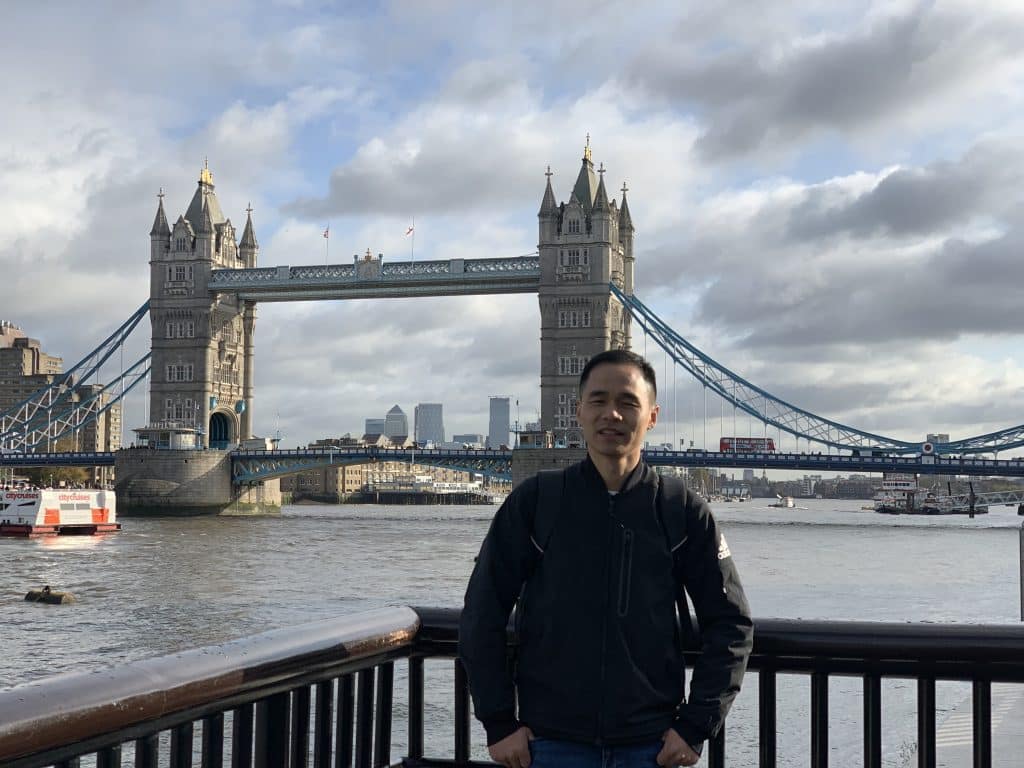
Hello Customers,
My name is Taylor Gong, I’m the product manager of ZGSM Tech. I have been in the LED lights industry for more than 13 years. Good at lighting design, street light system configuration, and bidding technology support. Feel free to contact us. I’m happy to provide you with the best service and products.
Email: [email protected] | WhatsApp: +8615068758483




